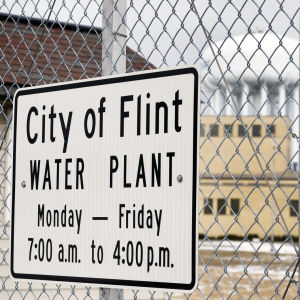More than a decade after a water-contamination crisis that exposed thousands of Washingtonians to toxic levels of lead, there remain at least 20,082 “identified” lead pipes on public and private property in the nation’s capital, according to information released Thursday by the District of Columbia water authority.
DC Water told InsideSources some of those pipes identified as lead may actually be reclassified once they are physically inspected. But the 20,082 figure — 12,302 lead pipes in public space plus 7,780 in private space — is still more likely to go up than down because 1) homeowners don’t have to report lead lines to the water authority and 2) there are an additional 16,276 public property lines in the water authority’s records identified as “unknown.”
Despite the confirmation that the city still has thousands of lead pipes, water officials were quick to note that tap water in the system has for years met all federal Lead and Copper Rule safety standards set and monitored by the Environmental Protection Agency.
The quality of drinking water in the nation’s capital is under intense scrutiny again this week after Washington’s lead-contamination crisis of 2000-2004 came up during Capitol Hill hearings on Flint, Michigan, where more than 100,000 residents were exposed to lead-contaminated water after the insolvent city switched suppliers to save money in 2014.
Marc Edwards, an environmental engineering professor credited with sounding the alarm on toxic water in both Washington and Flint, testified Tuesday before the House Oversight and Government Reform Committee that the long-term health impact of lead-tainted water in the nation’s capital will be “20 to 30 times worse” than what’s happened in Flint.
That assessment, the Virginia Tech professor said, is based on lead contamination levels in the District’s 2000-2004 crisis three times higher than the levels seen in Flint, with 6.5 times as many people in Washington exposed for twice as long. Edwards is one of the authors of a 2009 study that calculated as many as 42,000 District children were exposed to the contaminated water during the worst years of the crisis and are at risk of future health and behavioral problems linked to lead.
After Edwards told InsideSources this week that he has lingering concerns about the thousands of lead pipes that remain in the District’s water system, InsideSources’ Publisher Shawn McCoy set off a Twitterstorm of criticism on Thursday — mostly from media types — by teasing an upcoming story with: “DC RESIDENTS: Do not drink your tap water. Story breaking soon.”
DC Water spokesman John Lisle called the tweet “highly irresponsible.” But McCoy said the water authority’s record of deception during the 2000-2004 crisis (the EPA ruled in 2004 the water authority knew about dangerously high lead readings as early as 2001, but withheld the information) doesn’t inspire much confidence. Especially after Edwards, the Flint whistleblower, told InsideSources DC Water had been slow to respond to his latest batch of Freedom of Information Act requests.
“I read the story, and I have no intention of drinking D.C. tap water again,” McCoy told The Washington Post in an email.
In his email to InsideSources on Thursday, Lisle said the water authority is “very upfront about the dangers of lead in drinking water, which we consider to be a serious health risk.”
DC Water General Manager George Hawkins, who was hired in 2009, provided his own update on the water authority’s lead remediation efforts last week in a letter to Eleanor Holmes Norton, the District’s delegate in the House of Representatives.
Lead levels in Washington water have declined since 2004 due to the addition to the water supply of orthophosphate, a “food-grade” anti-corrosion chemical, Hawkins wrote.
“In the District, drinking water is essentially lead-free when it leaves the Washington Aqueduct’s treatment plants,” Hawkins wrote. But lead “can still enter drinking water that travels through a lead service pipe, lead solder or household plumbing containing lead.”
Hawkins notes in his letter that while the anti-corrosion treatment “has proven effective at reducing the presence of lead in water, the complete removal of all lead sources remains the fail-safe method to prevent lead poisoning.”
In 2004, at the height of the D.C. crisis, the water authority — then known as the Water and Sewer Authority (WASA) — announced a $300 million plan to replace all public lead lines — then estimated at 23,000 — by 2010.
According to the information DC Water released Thursday, six years after that deadline passed, there are still more than 12,000 lead pipes carrying water on public property.
The renewed interest in the District’s water problems comes as lawmakers threaten to turn the crisis in Michigan into a partisan political fight, with Democrats calling for the resignation of Republican Gov. Rick Snyder, and Republicans insisting President Barack Obama’s EPA chief Gina McCarthy needs to be fired.
But the country’s problems with lead-tainted water systems extend far beyond Flint.
USA Today, citing an analysis of EPA data, reported on Thursday that “about 350 schools and day-care centers failed lead tests a total of about 470 times from 2012 through 2015.”
According to the paper, “That represents nearly 20% of the water systems nationally testing above the agency’s ‘action level’ of 15 parts per billion.”

